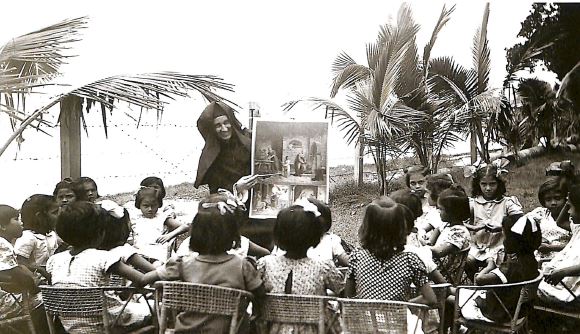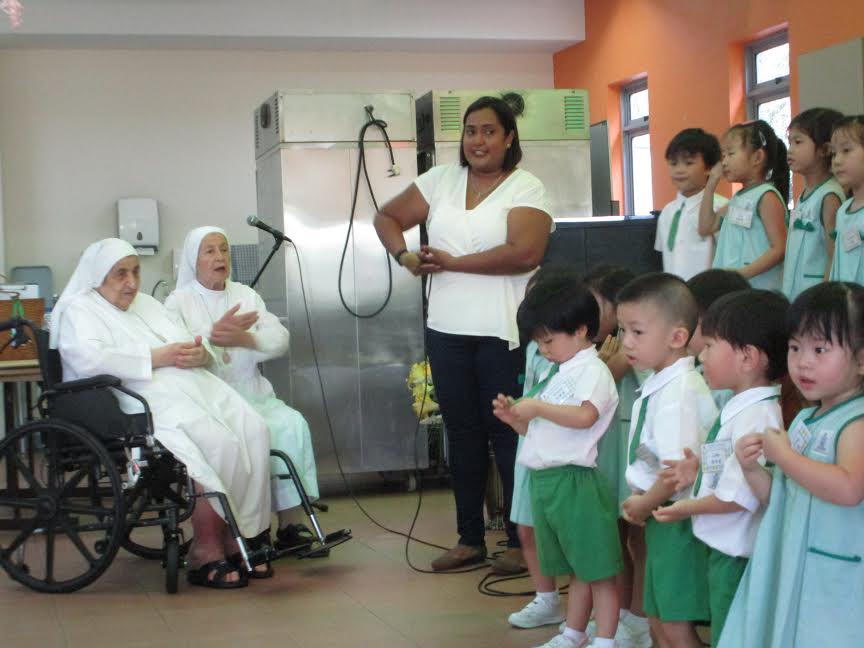“Do you want to live in community, on the understanding that you will not have any security? You will have enough to live on but only just enough … You must be ready to die by the wayside, abandoned by everybody, and remain in this attitude throughout your life.” This was the question which Father Nicolas Barre posed to the founding members of the Congregation of the Sisters of the Holy Infant Jesus, to which they responded in the positive.
Every year in May, the CHIJ schools in Singapore celebrate their Founder’s Day in remembrance of the Blessed Nicolas Barre. Since their introduction to the island-state in 1854, the schools have been under the supervision of this religious congregation, affectionately known as the IJ Sisters.
As the schools celebrate their heritage and achievements this month, we trace the birth and history of the Sisters, as well as the major contributions they have made to Singaporean education through their mission.
Blessed Nicolas Barre and the Little Charitable Schools
A French priest hailing from the order of the Minims of St Francis of Paola in the 17th Century, Father Nicolas Barre dedicated his life’s work to educating young girls in France. Blessed with a bright mind and deep intellect, Nicolas taught philosophy while he was still a deacon, and was appointed to direct the Minim House’s grand library in Place Royale, Paris, after his ordination.
He was later assigned to Rouen, where he met several young women who would join him in his “Little Charitable Schools” project, aimed at educating young girls from the largely-agrarian society in rural France and empower them for greater opportunities in life. In addition to teaching the children to read, write and do arithmetic, the initiative also sought to introduce them to the faith and the love of God.
As the number of volunteering teachers increased, Nicolas set up a training centre in an area called Rue St Maur to house them. By 1866, this group of women who dedicated themselves to educating young girls have developed into a congregation known as the Charitable Sisters of the Holy Infant Jesus.
Continuing the work of Blessed Nicolas after his death, the Sisters grew in strength, and later sent mission teams across various countries.
The Sisters’ work in Singapore and the region
The Sisters came to Singapore in 1854, after the establishment of a Catholic girls’ school in Victoria Street was authorised. The school was placed under the supervision of the Sisters of the Holy Infant Jesus from Penang, led by Mother Mathilde Raclot. Within 10 days after opening its doors on 5 February 1854, the school took in 14 fee-paying students along with a group of orphans.
The school grew over the years, and the Sisters had to expand their operations in order to accommodate the increasing number of students: Katong Convent (1930), St Nicholas Girls’ School (1930), St Teresa’s Convent (1933), St Joseph’s Convent (1938), Our Lady Queen of Peace (1955), Our Lady of the Nativity (1957), CHIJ Opera Estate (1959, now merged with Katong Primary), Our Lady of Good Counsel (1960), CHIJ Kellock (Originally founded as Our Lady of Lourdes School in 1888, moved to Kellock Road in 1964).
Today, the IJ Board of Management oversees 11 convent schools in Singapore.
The Sisters’ mission also bore fruit in British Malaya. By the 1880s their schools were well established, and they rode on the rapid development of new towns and roads in the 1890s to build more institutions throughout the land. In addition, the Congregation also undertook missions to Spain, Japan, Thailand and England, and reached as far as Peru and Cameroon, establishing schools in rural districts lacking in even basic amenities such as electricity, clean water and sanitation.
Learning from the Sisters
The Sisters did not start out as a religious order. Like many of us, the founding sisters were laypersons, armed only with their dedication to empower God’s children with the knowledge of His word, and equip them with basic life skills. Even after they have taken their vows, the Sisters remained intricately involved with the lives and well-being of the students they were charged to take care of.
The resourcefulness they have displayed in dealing with actual problems – gathering funds, preparing materials and finding adequate teaching facilities – are challenges we can relate to as educators. Their dedication to caring for the children of the poor and destitute, even in the toughest of times, has left an indelible mark on the education of young girls in Singapore over the years. To date, the Convent Schools have produced many women in prominent roles across our society, both Catholic and non-Catholic alike.
As the demands of education evolves rapidly, one lesson imparted by the Sisters remain relevant nonetheless: that success in an educator’s work can only come from an unyielding pursuit to bring up young people with their hearts firmly affixed on the Gospel, and with the values of love, truth, justice and freedom deeply embedded in their lives.




